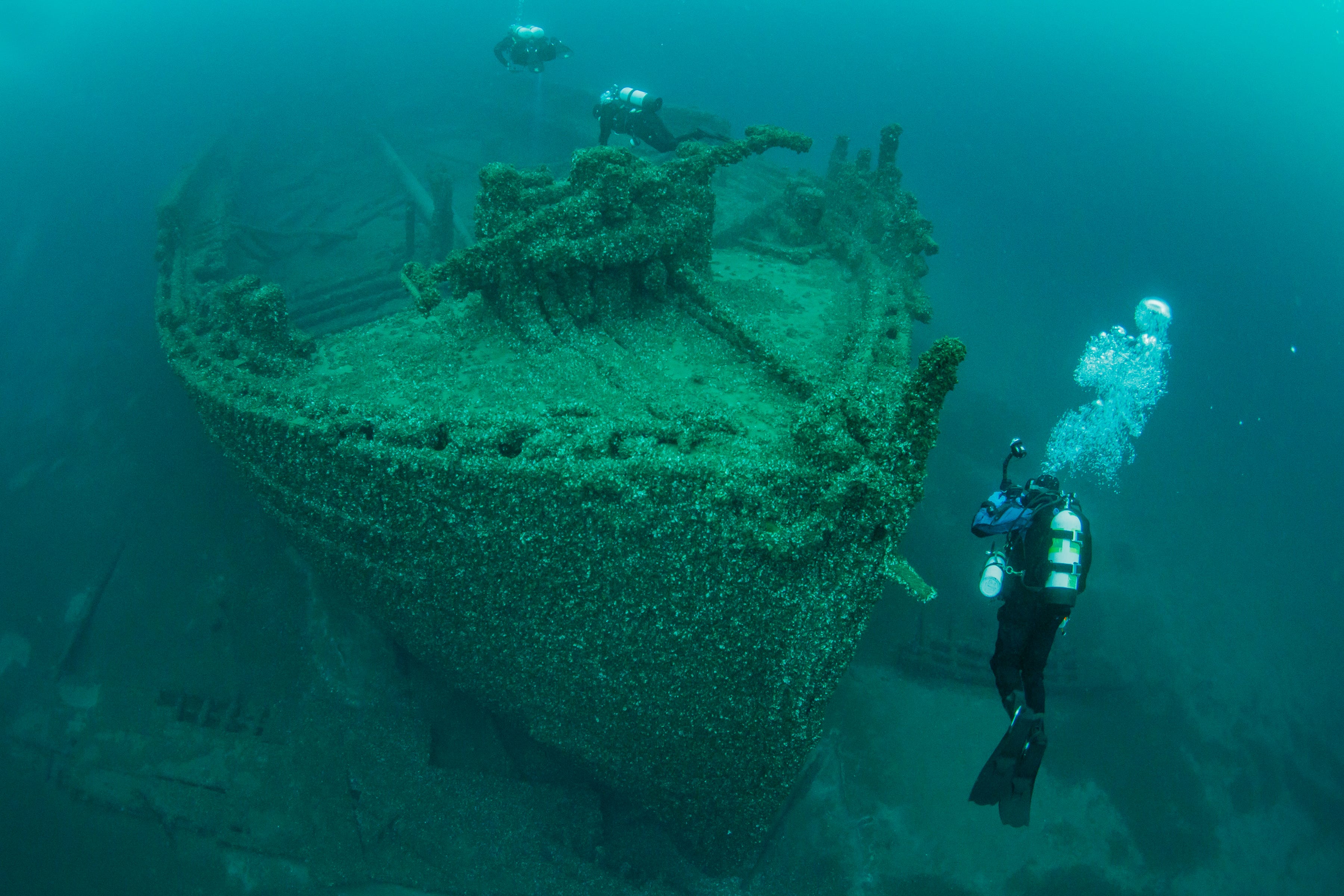The Detroit News
In this five-part series, The News looks at how climate change is affecting the five Great Lakes, and the research that's underway to protect them.
The Detroit News
Erma Leaphart spent her childhood summers in Chatham, Ontario, a small town on the north shore of Lake Erie where her grandparents rented boats to tourists with a taste for the freshwater sea.
 Guarding the Great Lakes
Guarding the Great Lakes
There were frogs, there were rowboats, there was fishing with her grandparents. Most importantly, there was water. The north shore of Lake Erie was heaven, she said.
"The more I learned about the Great Lakes, the more I loved them, the more I realized how significant and important and rare they are," said Leaphart of Detroit, who works on Great Lakes issues for the Sierra Club Michigan Chapter. "They've really got a hook in me."
She's willing to make this bet: They've got a hook in you, too.
But those beloved Great Lakes face an uncertain future. Starting today and every Thursday for the next five weeks, The Detroit News dives into the legion of challenges that climate change poses to each lake and what is being done to address them.
As Michigan's most valuable natural resource, the lakes are vulnerable to the effects of this warming planet. Greenhouse gas emissions, driven by the combustion of fossil fuels, have pushed the Earth's global average temperature by two degrees Fahrenheit in the last 150 years, ushering in an era of extreme temperatures, melting ice and changing habitats.
The News spent four months exploring the ways climate change will send ripple effects through the Great Lakes and their ecosystems, interviewing more than 40 scientists, conservation workers, anglers, archaeologists and nature lovers across the region. The impact also extends to businesspeople, elected officials and others with a stake in the health of the lakes.
All are working toward a common goal: protecting the lakes and their massive ecological, economic and recreational value for future generations.
The stakes are high. The five Great Lakes contain a remarkable six quadrillion gallons of fresh water, enough to cover the lower 48 states with more than 9 feet. Six quadrillion gallons is 84% of North America's fresh surface fresh water and 21% of the world's. The lakes are home to roughly 200 species of fish, provide drinking water to nearly 40 million people and support a regional recreation economy worth $52 billion.
A warming global atmosphere is changing the Great Lakes, said climatologist Richard B. Rood, a University of Michigan professor and core faculty member of the Great Lakes Integrated Sciences and Assessments Center.
Winters are growing warmer and shorter, summers longer. The lakes are battered by stronger storms that carry more water in their warmer air, as well as periodic dry spells. They are losing their once-reliable ice cover and experiencing warmer surface water temperatures. Their water levels recently experienced an unusual fluctuation from extreme lows to extreme highs, a swing more likely to be repeated with a warming climate.
Expect those trends to continue for the next 30 years, Rood said. Beyond that, we have some influence on what happens depending on how drastically we cut greenhouse gas emissions.
"Anything that's plausible starts to have an effect somewhere in the 30- to 50-year range," he said. "So in terms of intervention, to manage the upside of warming, to limit it, the actions today matter 30 to 50 years and they matter more in 100 years."
For this series, The News highlighted an issue on each Great Lake, interviewing those on the front lines of climate-related research.
We talked to biologists diving shorelines to monitor fish habitat, hatchery workers supporting future generations of native fish, ecologists tracking the lakes' changing chemistry, geochemists sampling rivers to understand a troubling resurgence in mercury, and scientists tasked with the unglamorous but essential job of scraping bird droppings off water quality monitors.
For Leaphart, the future of the lakes was so important that she traded retirement for the chance to lobby on their behalf. After a career in state government and brief stint as a retiree, she started advocating for the Great Lakes for the Sierra Club Michigan Chapter.
It means she spends her time talking about divisive topics: ditching fossil fuels, spending money on water infrastructure and retrofitting cities to protect them against flooding. But as much as people disagree, Leaphart said she can always return to a basic consensus.
"We may differ on a lot of things in this state, a lot of different opinions, diverse perspectives," she said, "but the one thing I think we can just about all agree on is we love these lakes."

ckthompson@detroitnews.com